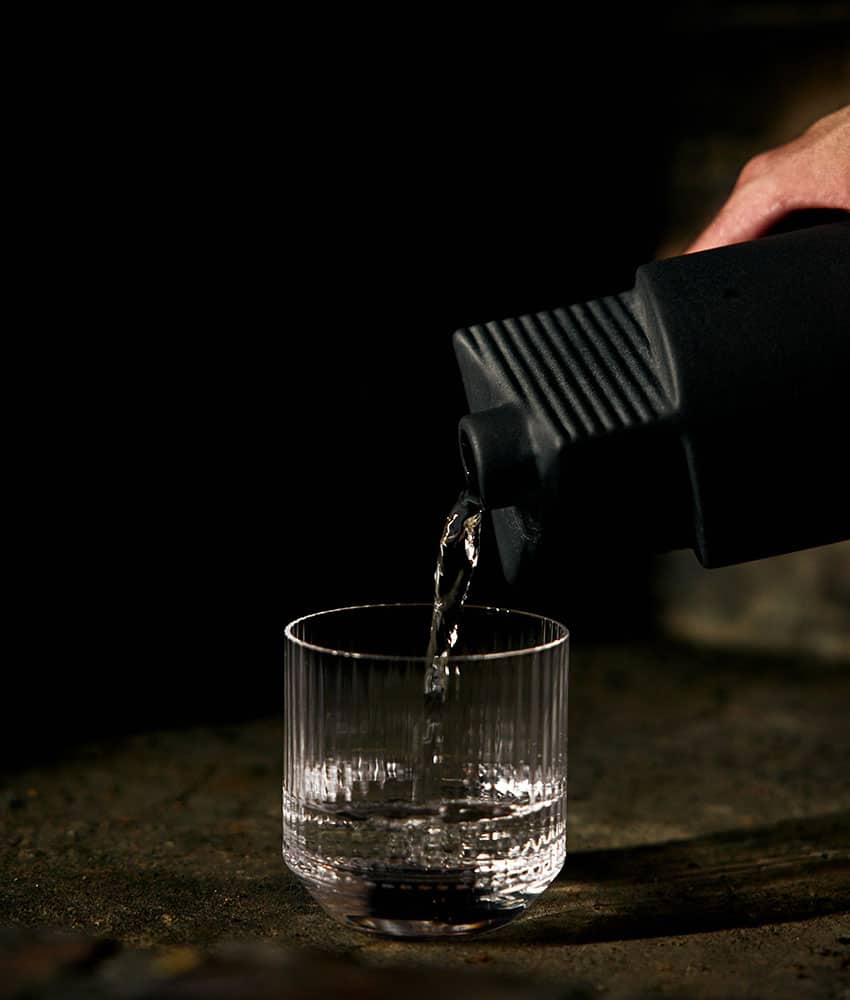OAX Original started out the way many great projects do, with a few friends bonding over a shared passion. In this case, it was mezcal and those friends were four artists and designers living in New York, each with their own personal connection to Mexican arts and architecture.
They wanted to create a mezcal brand that would not only showcase Oaxaca’s extensive diversity but also make tasting it a one-of-a-kind experience, from the moment your hand touches the bottle to the first sip landing on your tongue.
“Mezcal is incredible and has a lot to offer culturally in terms of the traditions and how it’s made,” says Laura Giraudo, founder of Bardo Industries and one of the project’s partners.
Her newfound passion for mezcal inspired her to become a sommelier.

“It’s been mind-opening for me in many ways, for my palate particularly.”
The OAX Original brand started with three types of agave – arroqueño, tobalá and tepeztate — producing 1,000 bottles of each at the launch. They quickly sold out.
The brand is now on its third production round, each time working alongside mezcal master Enrique Hernández Zenea, whose family has lived four generations in Oaxaca.
All their mezcals are made with single-origin wild agave that Hernández is harvesting sustainably, employing local community members.
“Mezcal, especially wild agave, has an incredible complexity, comparable to incredible wine, with different qualities in the flavor that continue to be expressed at different moments during the drinking of it,” Giraudo said. “Mezcal has this depth that I think people in the United States are just beginning to understand.
“Here, the culture of tequila is strong and people are very accustomed to shots, but to say, ‘Hey wait. This is a product to sip and enjoy, almost like a good whiskey,’ — that is opening up an interesting path for mezcal.”

There are, of course, repercussions to mezcal’s popularity, she explains. “Producers can finally charge more for their product; they can finally start to produce more; they can build better distilleries, some of whom right now are really interesting.”
But, she notes, as the world consumes more and more of the alcoholic beverage, if nothing is done, “one day [the agave] will be gone.”
“So, one of the things we wanted to do was to reforest and plant an endemic agave for every bottle sold,” she said.
This year, the team started planting tobalá agave on Hernández’s land. If any of the agaves they use for the production start to be endangered, they will immediately cease production with those varieties, Giraudo said.
But there’s more to love about this brand besides their ecological commitment: there are also OAX Original’s beautifully tactile bottles, an homage to Mexican architecture.

“The Spanish arrived in Mexico and tried to eradicate the culture and build on top of what was [there] and then realized that it wasn’t going to work because the culture was so strong,” she said. “So this new wave of architecture in the 20th century — [Luis] Barragán, [Frida] Escobedo, Mauricio Rojas — developed their own style, and it’s something that really inspired us because it’s very particular and unique.”
The surface of the pink, white and black bottles is rough, like earth or sand, with a triangle-shaped ribbed top third of the bottle and a rounded bottom two-thirds. Running your fingers along the top is reminiscent of the ribbed, stone washbasins found in older Mexican homes. The angles bring to mind the staircases and interior spaces of Casa Luis Barragán, the former home and studio of the architect in Mexico City.
The innovative design is turning heads and has received mentions in the publications Wallpaper*, Design Milk and Print Magazine.

“[It’s] the mix of something old, something new and something architectural at the same time,” Giraudo said. “There are tons of buildings in Mexico that are a little monochromatic, with different surfaces, where the light and the shadow are always at play, depending on the day, and that’s an idea we liked a lot because it’s also related somewhat to mezcal — a seasonal product where there is a period of intense sun, then one of intense rain, moments of the day when the sun burns the young agaves. And then at night, it’s suddenly cool. That duality, it comes from there.”
The tobalá I tried, at 48% ABV, is expertly crafted and floral, with a hint of fresh grass and mint. The sweetness of caramelized agave hearts used to make it shine through more than the smokiness that can sometimes dominate mezcal.

While not an inexpensive gift for yourself or someone else (the bottles cost from US $114– $194), purchasing one of these small runs means you have a libation that is exclusive to the batch and season and is irreplaceable in your collection.
OAX Original mezcal can be found most easily on the company’s website, but if you’re in the U.S., it’s also now available in shops in California, Florida, New York, New Jersey, Texas, New Mexico, Colorado and Oregon and a selected number of bars in New York and New Jersey. Consult their website for a directory of businesses carrying it.
Lydia Carey is a freelance writer and translator based out of Mexico City. She has been published widely both online and in print, writing about Mexico for over a decade. She lives a double life as a local tour guide and is the author of Mexico City Streets: La Roma. Follow her urban adventures on Instagram and see more of her work at www.mexicocitystreets.com.
